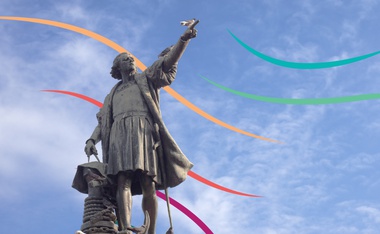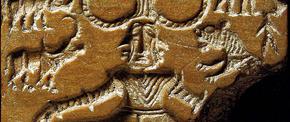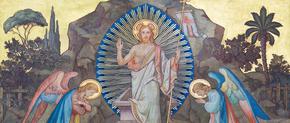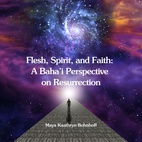The views expressed in our content reflect individual perspectives and do not represent the authoritative views of the Baha'i Faith.
King Ferdinand and Queen Isabella of Spain, two teenage cousins, were married in 1469. Isabella became Queen of Castile in 1474 and Ferdinand became King of Aragon in 1479. They launched Columbus.
Before his fateful ocean voyage in 1492, however, Ferdinand and Isabella also launched the Spanish Inquisition in 1478. A system of tribunals to enforce Catholic orthodoxy, it was initially used as a tool to test the sincerity of Jewish converts, but it eventually considered all professions of faith and set out to identify, persecute, torture, and kill “heretics” of any kind.
The Spanish Inquisition lasted three hundred years.
RELATED: War, the Papacy, and Christianity
The Baha’i teachings, especially those of Abdu’l-Baha, ask a penetrating question about that dark period in the history of Western civilization:
Christian hostility and inquisition spared not even the learned; he who proclaimed the revolution of the earth was imprisoned; he who announced the new astronomical system was persecuted as a heretic; scholars and scientists became objects of fanatical hatred, and many were killed and tortured. How do these actions conform with the teachings of Jesus Christ, and what relation do they bear to His own example? For Christ declared, “Love your enemies, … and pray for them which … persecute you; that you may be the children of your Father which is in heaven: for he maketh his sun to rise on the evil and on the good, and sendeth rain on the just and on the unjust.” How can hatred, hostility and persecution be reconciled with Christ and His teachings?
Let’s explore this important subject.
During the atmosphere of the Inquisition in 1492, of course, Ferdinand and Isabella sent Cristobal Columbus to find a passage to India, which led to the discovery of the “new world” and then to the enslavement and subjugation of its people by Spanish conquistadors. In a 1493 letter Columbus reflected on the Indigenous people he encountered as follows:
The people of this island and of all other islands which I have found and seen … all go naked … they … are so artless and free with all they possess, that no one would believe it without having seen it. Of anything they have, if you ask them for it, they never say no; rather they invite the person to share it, and show as much love as if they were giving their hearts …
In short, these Indigenous people seem to have been living quite a Christian life, and it would have seemed natural and good to invite them into a greater communion with people of similar values.
But that was neither the plan nor the true values of the Europeans who landed in the new world. Columbus had been sent to gather things of value, and having discovered native people, his first thoughts ran to slavery. He wrote in his journal about the people he discovered on October 14, 1492, saying: “with fifty men they can all be subjugated and made to do what is required of them.”
Not all of the newly discovered people, of course, were as peaceful as those Columbus found in the Caribbean. The Aztecs, who warmly welcomed Cortez, also practiced ritual (sometimes massive) human sacrifice. The Mayans also practiced it, though it was far less common. Many native societies in the new world, however, were peaceful, although Europeans did not spend too much energy in making any differentiation. Conquistadors were required to read natives a document known as the “Requerimiento.” The reading was often done in the language of the document, Latin, and a translation of the essence of it is as follows:
… acknowledge the Church as the Ruler and Superior of the whole world … if you do so, you will do well … But if you do not do this … we shall powerfully enter your country, and shall make war against you in all ways and manners that we can, and shall subject you to the yoke and obedience of the Church … we shall take you and your wives, and your children, and shall make slaves of them, and as such shall sell and dispose of them as their Highnesses [Ferdinand and Isabella] may command.
What we see here is a continuation of the practice of forced conversion and subjugation that began over a thousand years ago with Constantine’s successors – and has continued ever since.
At about the same time that the native peoples of the Americas were being forcibly converted to Catholicism, the church at home in Spain was increasingly engaged in a horrible Inquisition that gained strength under the successors to Ferdinand, Charles I (who as Holy Roman Emperor became Charles V) and more especially his son Phillip II. It’s estimated that over 25,000 people were put to death in the Inquisition and many more were stripped of their dignity, faith, possessions, and safety.
But it was not just Catholic Spain that engaged in the fanatical exercise of Christian religion. The French Wars of Religion (1562-1598) between Catholics and Protestant Huguenots resulted in the deaths of many tens of thousands. Somewhere around 10,000 Huguenots were killed in just a few weeks in the St. Bartholomew’s Day Massacre of 1572.
RELATED: Christianity’s King Charlemagne: Hero or Brutal Ruler?
A few dozen years earlier in my old ancestral homeland of England under Henry VIII, religious coercion looked like this: People were required to go to church, every word that was said in the service was prescribed or supervised, the color of clothes you could wear was determined by your social status, what you were allowed to eat was fixed, especially on fasting days, by the clergy and ministers of the law who could break into your house to ascertain if you were obedient. There were also “heretic” and book burnings with ever-shifting criteria. Henry’s successor, Mary Tudor, who temporarily brought England back to Catholicism, burned 283 heretics in her brief three-year reign.
This too is not the Kingdom of God for which we have waited – far, far from it.
The core Baha’i principle of the independent investigation of truth completely prohibits any coercion or use of force in religion. The Bab, Baha’u’llah’s herald and predecessor, wrote: “The path to guidance is one of love and compassion, not of force and coercion.” Baha’u’llah, in his book The Hidden Words, wrote:
The wise are they that speak not unless they obtain a hearing, even as the cup-bearer, who proffereth not his cup till he findeth a seeker, and the lover who crieth not out from the depths of his heart until he gazeth upon the beauty of his beloved. Wherefore sow the seeds of wisdom and knowledge in the pure soil of the heart, and keep them hidden, till the hyacinths of divine wisdom spring from the heart and not from mire and clay.
Baha’is do not proselytize or attempt to force their Faith on anyone. Instead, Baha’u’llah asked every Baha’i to teach by example, to offer spiritual guidance only when asked, and to focus on transforming love into action for the benefit of all humanity.
















Comments
Sign in or create an account
Continue with Googleor